Hungarian Vizsla Dog Breed Information
The Vizsla is a distinguished dog breed with roots tracing back to Hungary’s ancient Magyar tribes. These dogs are a blend of grace and utility, making them popular among dog lovers across the globe. Vizslas have a striking, russet gold coat and a muscular frame, making them visually appealing and highly capable in activities like hunting and tracking. They are known for their sharp minds and friendly demeanor, making them great pets for hunters and active families.
However, Vizslas are complex animals with specific requirements for their care. People considering this breed should consider whether they can meet Vizsla’s high energy levels and care needs. Understanding their history, personality, and health is crucial for anyone considering adding a Vizsla to their home.
This breed can be a challenge and a rewarding addition to the right home.
Key Takeaways
- The Vizsla, originating from Hungary, excels in hunting and tracking.
- Owners must match Vizsla’s high energy and care demands.
- A well-suited home finds Vizslas rewarding companions.
Originating from Hungary, the Vizsla stands out with a russet gold coat and versatility in hunting. These energetic dogs mesh well with active lifestyles, offering companionship and utility. Prospective owners should assess their ability to fulfill the breed’s physical and emotional needs. In a nurturing environment, a Vizsla thrives, becoming a loyal family dog member.
Quick Facts
The Vizsla, a medium-sized dog with a distinctive red coat, hails from Hungary and is known for its dynamic nature. This breed stands out for its longevity, typically lasting 12 to 14 years.
The Vizsla, also known as the Hungarian Pointer, is a favorite among hunters for its impressive hunting abilities and ability to adapt to different environments. As a part of the Sporting Group, the Vizsla is friendly and makes for a great pet, showing dedication and warmth to its family, kids, and even new people.
The American Kennel Club (AKC) recognizes the breed, which promotes responsible dog ownership and sets the standards for various breeds. The Vizsla Club of America works to maintain the breed’s quality and health, providing resources and support to those passionate about Vizslas.
Vizsla Dog Breed Information Pictures
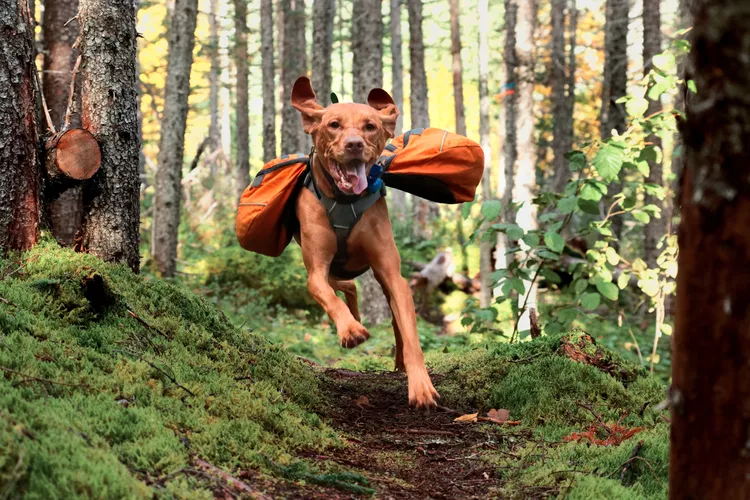
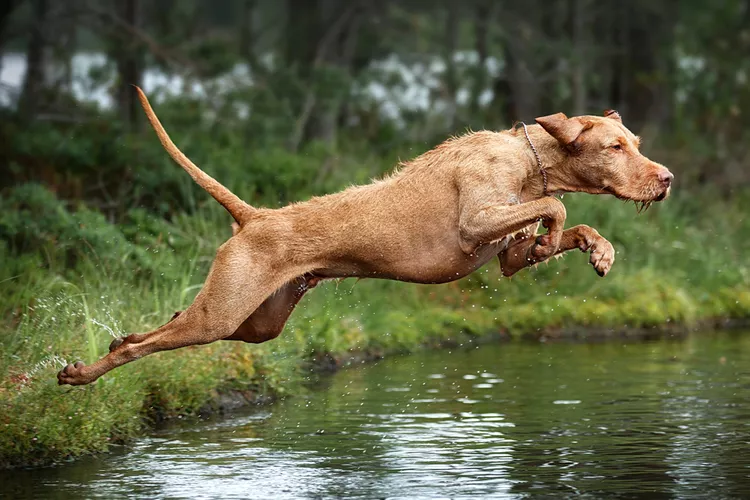
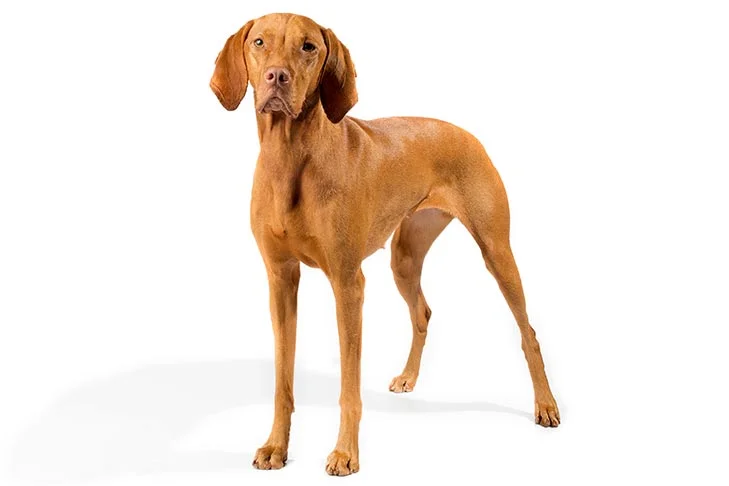

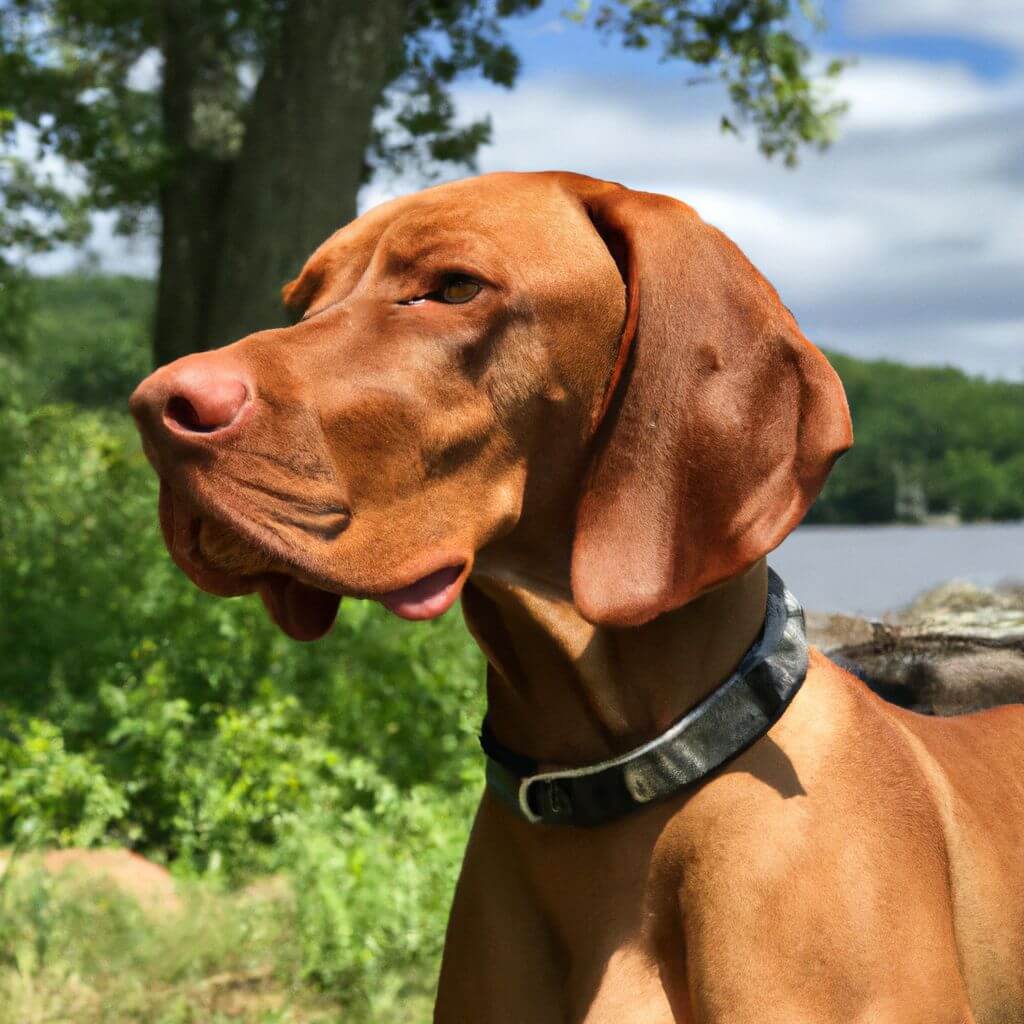
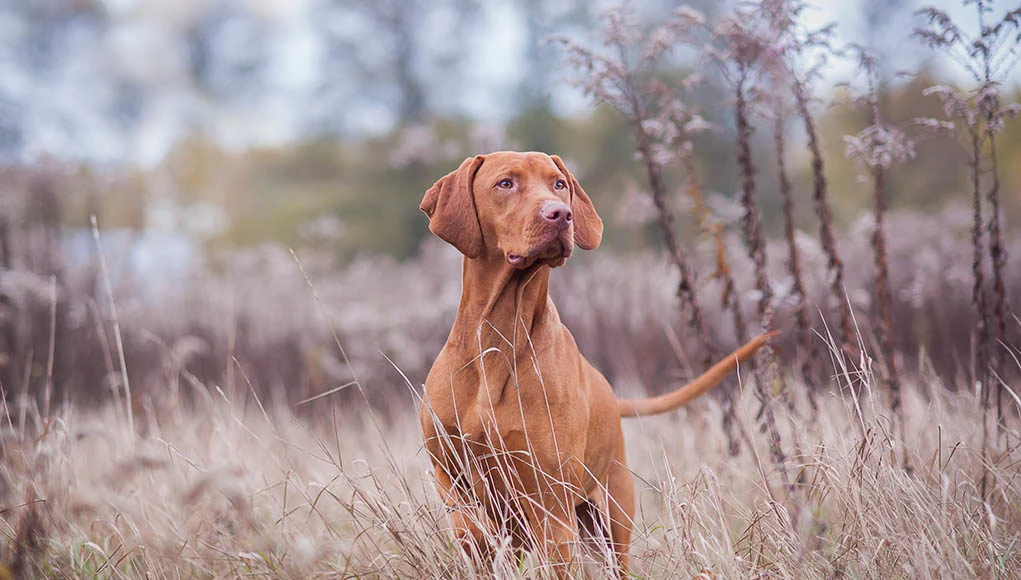
Overview
Renowned for its versatile capabilities as a gundog, the Vizsla exemplifies elegance and rugged athleticism, contributing to its rising popularity among dog enthusiasts in the United States.
Originating as a favored companion of Hungarian athletes, the Vizsla Dog Breed is characterized by a distinctive red coat, signifying its historical role in various hunting scenarios.
This breed embodies a unique combination of affection, energy, and loyalty, forging an intense attachment with its human counterparts. Notably proficient swimmers and natural hunters, Vizslas require systematic grooming and consistent exercise to maintain their robust health.
With a lifespan typically spanning 12-14 years, these dogs are susceptible to specific genetic disorders, underscoring the importance of conscientious breeding practices to ensure their vitality and longevity.
Key Vizsla Traits
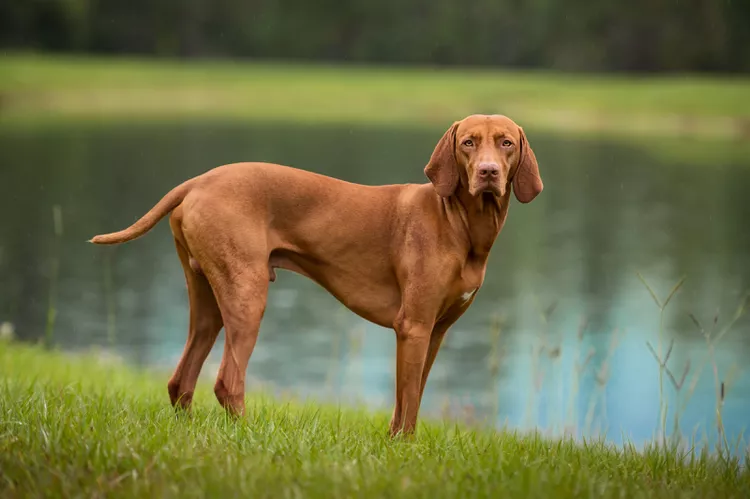
Vizslas are known for their endurance and elegance, making them popular as pets and hunting partners. These dogs are medium-sized and known for their deep affection, often creating strong bonds with their owners. They generally live for 12 to 14 years, a testament to their robust health. To stay healthy, Vizslas need plenty of physical activity and mental stimulation.
| Trait Category | Description | Considerations |
|---|---|---|
| Physical | Medium build, athletic, distinctive red coat | Training should be gentle, and they need lots of social interaction |
| Behavioral | Full of energy, devoted, very affectionate | High endurance requires extensive exercise |
| Exercise | High endurance, requires extensive exercise | Vital for their physical and mental well-being |
| Health | Can develop hip dysplasia, epilepsy, hypothyroidism | Regular check-ups with the vet are advised |
Vizslas are medium-sized dogs that are both athletic and beautiful. They have a striking red coat that’s easy to care for with minimal baths and routine grooming. Behaviorally, they’re full of energy and devotion, needing a gentle hand in training and plenty of social time. They have impressive endurance and thus require a lot of exercise, which is crucial for their health and happiness. While generally healthy, they are susceptible to certain conditions like hip dysplasia, so it’s wise to have regular vet visits.
Pet Parents Ancestral Roots & Evolution
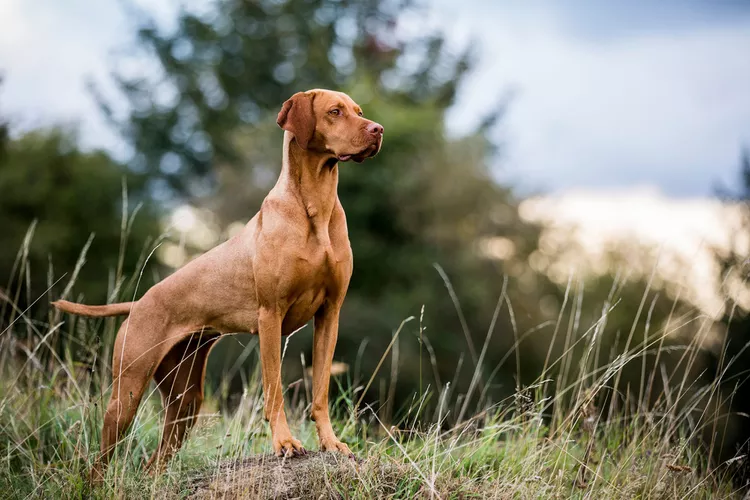
The Vizsla breed has a rich history in Hungary, evolving from an ancient hunting companion to a multifaceted modern gundog. Each stage of its development was shaped by societal changes and targeted breeding to improve its natural abilities for hunting. Records show that the Vizsla worked in various hunting scenarios, from assisting with falconry to tracking and pointing, showcasing its versatility and consistent value.
- Vizsla Origin Story
- Rise in the Carpathian Basin
- Connection with Magyar tribes
- Illustrations in early Hungarian art
- Breed Development Stages
- Careful breeding in feudal times and later
- A brush with extinction and revival after World War II
- Creating standards with kennel club guidelines
- Historical Hunting Roles
- Involvement in falconry as a retriever and pointer
- Adjusting to new hunting practices over time
- Praise for its sharp sense of smell and agility in different landscapes
The Vizsla is deeply rooted in Hungarian culture, with its history tracing the Carpathian Basin and its bond with the Magyar tribes. Art from early Hungary depicts the breed, demonstrating its longstanding significance. The Vizsla was selectively bred throughout various phases to refine its hunting skills, especially during the feudal era. After nearly vanishing following World War II, efforts to revive the breed succeeded, leading to its recognition by kennel clubs and the establishment of breed standards.
These dogs played crucial roles in traditional hunting, functioning as both retrievers and pointers in falconry. They adapted to the evolving nature of hunting over centuries, earning respect for their exceptional scenting ability and graceful movement across different terrains. Today, the Vizsla is celebrated for its adaptability, intelligence, and loyal nature, making it a beloved companion beyond its hunting origins.
Vizsla Origin Story
The Vizsla is a Hungarian dog breed with a history that dates back to the Dark Ages. Magyar tribes created this breed to be a versatile hunting companion. It’s a medium-sized dog that belongs to the sporting group and is easily recognized by its shiny red coat. Hunters in Hungary have long valued the Vizsla for its agility and athleticism. After almost disappearing following World War II, Hungarian breeders worked hard to bring the Vizsla back from the brink using the few remaining dogs. The breed gained official recognition from the American Kennel Club in 1960.
These dogs are known for being friendly and gentle and forming strong bonds with their owners. They need plenty of mental stimulation to stay happy. Vizslas are natural at hunting and excellent swimmers, but they respond best to gentle training methods.
While they are generally healthy, Vizslas can inherit certain health conditions, so it’s essential to keep up with their grooming, exercise regularly, and maintain a healthy weight to promote their overall health.
Breed Development Stages
The Vizsla, known for its role as a hunting companion and a beloved family pet, has a storied past dating back to the Dark Ages. Originating in Hungary, these dogs were once the trusted aides of Magyar warriors.
Despite facing the threat of extinction after World War I, dedicated breeders worked tirelessly to preserve the Vizsla. Their efforts paid off, leading to the breed’s official acknowledgment by the American Kennel Club.
Today, the Vizsla is a popular choice in the United States, with many new registrations yearly. They are not only cherished for their companionship but also for their influence on the development of other dog breeds.
To ensure these dogs reach their full potential as companions, starting socialization from a young age is essential. This helps them grow into confident and friendly adults in the field or at home with the family.
Historical Hunting Roles
The Vizsla breed has a storied history as hunting dogs dating back to the Dark Ages. Known for their agility and intelligence, these dogs became indispensable to hunters in Hungary. Magyar warriors bred these medium-sized dogs for various tasks like tracking and retrieving. The need for versatile hunting abilities shaped their muscular bodies and sharp instincts.
After World War II, the breed nearly vanished, but dog enthusiasts managed to save it. The American Kennel Club acknowledged the Vizsla in 1960. Today, these dogs are celebrated for their boundless energy and love for swimming. Training a Vizsla requires patience and creativity, keeping their minds as active as their bodies. Their continued preference among hunters speaks to their rich history and specialized breeding as hunters.
Vizslas Stature
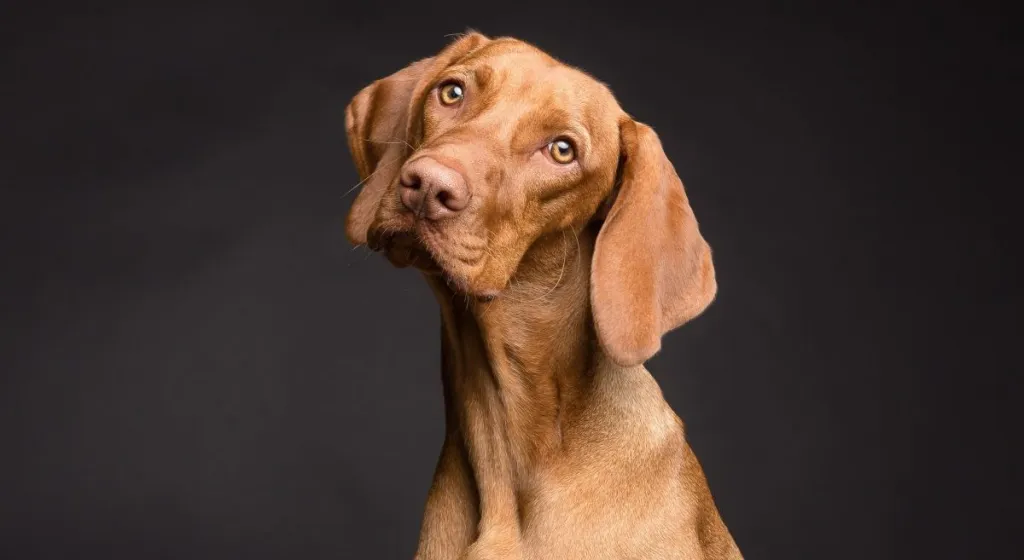
The Vizsla is a dog breed known for its impressive hunting abilities and a physique that balances strength with agility. These dogs are built differently based on gender, with males usually larger than females. Both sexes, however, boast a build that supports their active lifestyle. We can gauge their growth and size expectations through specific milestones over their lives.
Typical Size for Vizslas
Male Vizslas stand about 22 to 24 inches tall at the shoulder. Female Vizslas are slightly shorter, usually measuring 21 to 23 inches in height. Regarding weight, males tip the scales at 55 to 60 pounds and have a solid muscle structure. Females weigh 44 to 55 pounds and have a somewhat lighter frame.
Physical Traits of the Vizsla
A Vizsla’s coat is short, smooth to the touch, and comes in distinctive rust. Their ears are soft and hang down, adding to their expressive appearance. As for their tails, they are slender and usually held level, in line with their back.
Typical Height Range
Vizslas are known for their medium build, with male dogs standing at 22-24 inches and females at 21-23 inches tall. They belong to the Sporting Group and are designed for both strength and agility, which aids them in various outdoor activities. Their balanced body shape is a crucial aspect of the breed standard, which relates to their past as nimble hunting companions in Hungary.
Their size is partly why Vizslas are becoming more beloved worldwide, including in the United States. Their consistent size is crucial for preserving the breed’s quality and ability through the years.
Weight and Build
With their roots as adaptable hunters, Vizslas have males that generally tip the scales at 55-60 pounds and females at 44-55 pounds. Their physique combines toughness and grace, making them both strong and attractive.
Males are 22-24 inches tall, while females measure 21-23 inches, enhancing their stamina and agile movement.
The Vizsla’s golden rust coat looks good and serves a purpose during hunts. These dogs are well-proportioned, showing power and elegance, ideal for their traditional role with Hungarian hunters.
Physical Characteristics
The Vizsla is a medium-sized, athletic dog known for its appealing shape and effectiveness in outdoor sports. Males stand about 22-24 inches tall, while females are slightly shorter at 21-23 inches. They weigh between 44 to 60 pounds, which makes them both elegant and robust. Vizslas have a short, rust-colored coat that looks sleek and helps them in athletic competitions.
This breed’s muscles are well-defined and have a strong instinct to protect. These qualities should be kept in mind when training them. Regular brushing and nail care are essential to keep their coats looking good.
Vizslas may be prone to health issues like hip dysplasia, epilepsy, and cancer, so frequent health checks are essential. These checks help them reach their potential lifespan of 12-14 years.
Athleticism and Movement
Known for their impressive endurance and quickness, Vizslas are a perfect blend of power and pace. This makes them excel in various sports. Male Vizslas stand between 22 and 24 inches tall, while females range from 21 to 23 inches. They weigh 44 to 60 pounds and have a distinctive red coat. These dogs are strong and built for long-lasting athletic activities.
Vizslas came from Hungary and have become popular in the United States because of their sports skills and versatility in outdoor activities. To keep fit and make the most of their instinctual talents in hunting and swimming, Vizslas need lots of exercise and things to keep their minds active. They thrive on staying active, which helps them remain agile and robust during their 12 to 14 years of life.
Growth Milestones
During their initial year, Vizslas proliferate, with males reaching 22-24 inches and females 21-23 inches by 12 to 18 months. A puppy of this breed will noticeably increase in height and weight, with males reaching about 55-60 pounds and females going 44-55 pounds when fully grown. Their growth includes the development of bones and muscles in harmony, which is essential for their active lifestyle. Keeping an eye on these growth milestones is vital to ensure a healthy development that meets breed standards, which involves good nutrition and regular exercise.
As Vizslas move past their puppy years, their growth continues into their second year. This period marks the end of their physical development. Tracking this progress helps maintain their well-being and prepares them for an energetic, healthy life.
Vizsla Temperament Traits
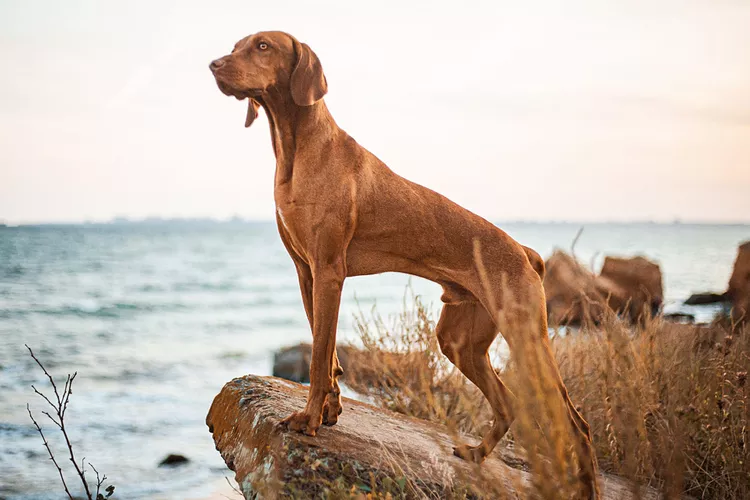
The Vizsla is known for its dynamic mix of traits stemming from its multifaceted hunting dog heritage. They are warm and devoted companions and possess boundless energy that calls for plenty of exercise and impressive smarts, making them a joy to train. Let’s delve into the Vizsla’s personality:
Affectionate with Their Families
Vizslas form deep bonds with their human families, showing remarkable loyalty and kindness in their interactions.
Needs Regular Active Time
These dogs thrive on consistent, vigorous physical activity daily and enjoy spirited games that get their legs moving and hearts pumping.
Smart and Ready to Learn
Vizslas are known for their ability to learn quickly and desire mental challenges. This helps prevent problematic behaviors by keeping their minds engaged.
Affectionate Family Companions
Vizslas are known for their strong attachment to humans. These loving dogs quickly connect with every household member, from kids to strangers. With a soft and spirited nature, Vizslas are sometimes called ‘Velcro dogs’ because they always want to be by your side. They need a lot of exercise and interaction to stay happy and healthy, making them great dogs for families.
These dogs are intelligent and easy to train, responding well to positive reinforcement. However, Vizslas must get enough physical activity and mental stimulation. Without this, they may develop separation anxiety or behave destructively. Creating a routine with plenty of exercise and love is vital for their psychological and physical wellness.
Energetic Exercise Needs
Vizslas are known for their loving nature and make great pets, but they also have high exercise needs. These dogs thrive on plenty of daily physical activity to stay happy and healthy. Without regular exercise, Vizslas might start showing unwanted behaviors like being too active or anxious. Giving is running, playing fetch, or doing challenging obedience training.
Regular work is crucial for their well-being and is critical to managing Vizsla’s boundless energy and preventing issues. It’s also essential to keep their minds engaged with consistent, positive training and to socialize them from a young age. This not only taps into their intelligence and makes them easier to train but also helps them develop a calm and stable temperament.
Combining their love for human contact with enough physical activity helps these affectionate dogs stay in great shape and emotionally content.
Intelligent Training Engagement
The Hungarian Vizsla is known for its intelligence and desire to please. To direct their energy positively, providing consistent and stimulating training is vital.
Their mental abilities demand strategies that honor their instincts and promote focused learning. Mental stimulation is as critical as physical activity to avoid negative behaviors from a lack of engagement.
The Vizsla’s love for excitement and companionship highlights the importance of early socialization and obedience training. This helps manage their potential stubbornness or timidness.
For the best results, combine active play with brain games. This approach helps prevent issues like separation anxiety and creates a balanced pet.
Gentle Social Behavior
Vizslas’s mental and physical stimulation is vital, and their friendly and gentle nature plays a significant role in their happiness. Known for their strong attachment to their owners, these dogs are called ‘Velcro dogs’ because they stick close to their human companions. They need plenty of exercise to prevent unwanted behaviors such as neurotic tendencies or destructiveness resulting from insufficient physical activity and social time.
Introducing Vizslas to new people and situations early is vital to help them become confident and reduce their over-excitement. This helps to prevent them from being easily distracted or shy. Vizslas are naturally friendly and polite with people and other animals, and this ability to interact well is essential for their emotional health.
Potential Separation Anxiety
Given their strong propensity for companionship, Vizslas may experience separation anxiety, a condition characterized by distress and behavior problems when separated from their owners. This breed exhibits a high degree of attachment, which can manifest as undesirable conduct when left alone for long periods.
Mitigation strategies include rigorous socialization and structured training to bolster the dog’s confidence and modulate excitability. Additionally, Vizslas necessitate abundant daily exercise to avert neurotic tendencies. These dogs, often dubbed ‘Velcro dogs’ for their intense loyalty, need consistent mental and physical engagement to thrive.
Prospective Vizsla caretakers must recognize the substantial exercise needs, the imperative for close companionship, and the potential for separation anxiety, necessitating an unwavering and spirited commitment to their care.
Vizsla Wellness Concerns
The Vizsla is a dog breed known for its impressive athletic abilities and desire for human companionship. However, people considering getting a Vizsla should know about the breed’s health issues. Understanding these problems is critical to caring for a Vizsla’s entire life.
Here’s a look at the primary health concerns for Vizslas:
- Health Challenges
Vizslas have a genetic risk for hip dysplasia, which is an abnormal formation of the hip that can cause arthritis. They also tend to inherit epilepsy, which leads to repeated seizures. Another concern is progressive retinal atrophy, potentially leading to blindness.
- Care Strategies
Regular health checks are advised to catch thyroid and eye issues early. Keeping Vizslas active helps protect their joints and can help prevent hip dysplasia. A well-rounded diet is essential to keep their metabolism in check and avoid weight gain.
- Lifespan Influences
A Vizsla’s lifespan can be affected by its genetic background, which might make it more likely to get certain diseases. How they’re cared for, and their living environment also affects the health issues they might develop as they age. Regular vet visits are crucial for a longer, healthier life.
In caring for a Vizsla, it’s essential to be aware of these health concerns and take proactive steps to prevent them. A healthy diet, exercise, and regular vet check-ups can make a big difference in the lives of these affectionate dogs.
Vizsla Health Conditions
Vizslas, known for their affectionate nature, typically live between 12 and 14 years. These dogs often face specific genetic health issues, like hip dysplasia, epilepsy, cancer, hypothyroidism, and progressive retinal atrophy. Owners must proactively watch for signs and symptoms to keep their pets healthy.
Hip dysplasia occurs when the hip joint doesn’t form correctly, which can cause pain and difficulty walking. Dogs with this condition often need special care to manage arthritis that can develop.
Epilepsy in Vizslas can be challenging to manage due to unpredictable seizures. Owners must work closely with vets to control this condition.
Various types of cancer can also affect these dogs. Treatment might involve surgery or chemotherapy, depending on the tumor.
Hypothyroidism, a disorder where the thyroid doesn’t produce enough hormone, is treatable with medication that the dog will need throughout its life.
Lastly, progressive retinal atrophy leads to vision loss and eventually blindness. While there’s no cure, breeding practices that screen for this condition can help reduce its occurrence. Vizsla breeders must use genetic tests to prevent these health issues from spreading within the breed.
Preventative Care Measures
Regular vet check-ups and timely immunizations are crucial to maintaining Vizslas’s health. These visits help spot and address health problems early.
The American Kennel Club points out that dental hygiene is critical, so brushing their teeth often is necessary to prevent gum disease.
Keeping their weight in check and getting enough exercise is essential to avoid obesity and keep them in good shape.
It’s also wise to talk to your vet about everyday issues like hip dysplasia and epilepsy.
A well-rounded diet supports their digestive health and meets their nutritional needs, which helps avoid food-related issues.
These steps are essential for Vizslas’s lifelong health.
Lifespan Expectancy Factors
Owners who want their Vizslas to live long and healthy lives need to be aware of the factors that affect the lifespan of these dogs, which usually fall between 12 and 14 years. Health issues that the breed often faces, such as epilepsy, lymphosarcoma, and progressive retinal atrophy, play a significant role in how long they live. Spaying or neutering a Vizsla might increase their health risks.
The Orthopedic Foundation for Animals offers tools and information that help owners and breeders reduce the risk of hip dysplasia, a common issue for Vizslas.
Taking good care of a Vizsla’s coat and nails with regular grooming and clipping is part of keeping them healthy. Responsible breeding practices considering the breed’s genetic background are vital to ensuring Vizslas live whole lives.
Vizsla Maintenance Essentials
Caring for a Vizsla involves a disciplined approach to grooming, nutrition, and health monitoring. A suitable care routine includes regularly brushing their coat, choosing a diet that meets their high-energy needs, and watching for signs of health issues. For their overall health, it’s crucial to provide regular exercise, consistent training, and opportunities for social interaction.
Grooming Your Vizsla:
- Brush their coat weekly to reduce shedding
- Trim their nails regularly to avoid them getting too long and causing discomfort
Meeting Their Dietary Needs:
- Include plenty of proteins in their diet to keep their muscles strong
- Add essential fatty acids to keep their coat shiny and healthy
Keeping Them Active:
- Engage your Vizsla in daily activities that get their heart pumping
- Play games with them often to keep their mind sharp
When caring for a Vizsla, remember that their grooming needs aren’t excessive, but they do shed. Weekly brushing helps manage this. Trim their nails when needed to keep their paws pain-free. For their diet, make sure it’s rich in proteins and fats, vital for their energy and coat quality.
Exercise is key for a Vizsla. They need plenty of activities that keep them moving to stay fit. Also, ensure they have fun; interactive play keeps them mentally engaged. With these steps, you’ll help ensure your Vizsla stays healthy and happy.
Grooming and Coat Care
Regular brushing is vital to maintaining a Vizsla’s coat. It helps get rid of dirt and loose hair. Bathing them occasionally is also suitable for keeping their skin healthy and their bodies clean. A steady routine for grooming your Vizsla is essential to keep them happy and healthy.
When the temperature drops, you might need to do more to keep your coat and skin safe from the cold. Keeping their nails trimmed is a must to avoid painful overgrowth and injuries. Caring for their teeth is just as essential to ward off gum disease. Grooming times are great for spotting skin issues early on, like strange bumps or ear infections.
Getting your Vizsla used to grooming early on means they’ll stay calm when it’s time for a brush or bath. Finding a professional groomer might be a good idea if you’re unsure how to do all this.
Nutritional Requirements
Vizslas need a diet of good-quality protein, fats, and carbs to keep up with their energetic lives. This helps them stay healthy and maintain their energy. They need the right balance of nutrients to keep their muscles strong and to support their active routine. Their health and energy can suffer if they don’t get enough of these critical nutrients.
Proteins are crucial for fixing and growing body tissues, and fats are a dense source of energy that also helps absorb vitamins that dissolve in fat. Carbs are vital because they give Vizslas a steady power supply when active.
Preventing health problems like hip dysplasia, epilepsy, and hypothyroidism also depends on a good diet and regular vet check-ups. This is key for Vizslas to live long and happy lives.
Exercise and Activity Levels
Vizslas are naturally athletic dogs with a lot of energy, so they need regular exercise and mental challenges to stay healthy and behave well. These dogs come from a line of hunting dogs and need about 40 minutes of daily exercise.
This can include running, playful activities, and training sessions. Taking them outside is excellent for using their energy and keeping their minds sharp, which helps prevent bad habits.
It is essential to keep them on a regular exercise schedule and using positive training to keep them in shape, intelligent, and emotionally stable. This way, they can live happily with their owners.
Training and Socialization
For young Vizsla puppies, getting plenty of exercise is just the beginning. They also need consistent training and exposure to different people and situations from an early age. This helps them grow into well-mannered adult dogs. Using treats, praise, and play to teach them is an intelligent approach. It makes learning enjoyable and helps puppies become good at dealing with new experiences.
Bringing Vizslas into new settings, meeting various people, and interacting with other animals is essential. It builds a friendly and flexible nature, which is especially important for a breed known for its hunting skills. This ensures they are ready for whatever situation they might find themselves in.
Keeping them physically active and mentally stimulated is vital to their happiness. If you run into any trouble with training or behavior, it’s a good idea to seek help from a professional early on. They can help you get back on track quickly.
Health Monitoring Practices
Regular vet visits are vital to keeping Vizslas healthy and catching illnesses early. Hip dysplasia, epilepsy, and cancer are some issues to watch for in this breed. Vizsla owners must closely monitor their dogs’ health, including regular checks for hip and thyroid issues. As Vizslas ages, looking for any signs of joint pain or seizures is essential.
Managing a Vizsla’s weight is vital because being overweight can worsen joint problems and cause other health issues. Feeding these dogs the right amount and ensuring they get plenty of exercise is essential.
Mental stimulation is also necessary to keep these intelligent, active dogs happy and well-behaved.
Vizsla Nutritional Guidelines
The Vizsla, an energetic and agile dog breed, requires a well-thought-out nutritional plan to stay healthy and active. Sticking to a structured feeding routine and ensuring their diet has all the necessary nutrients for their overall well-being and energy levels is essential. Paying attention to the specific dietary needs of this breed is vital, significantly to help prevent common hereditary health issues.
Essential Elements of a Balanced Diet
- The right mix of protein, fats, and carbohydrates is critical.
- It’s essential to include enough vitamins and minerals in their diet.
- Adding omega fatty acids is great for maintaining a shiny coat.
Key Dietary Considerations
- It’s beneficial to monitor their calorie intake to avoid weight gain.
- Joint health can be supported by adding supplements that protect cartilage.
- Using probiotics can promote a stable digestive system.
Recommended Feeding Routines
- Fixed meal times help with metabolic health.
- Controlling portions is necessary to match their activity levels.
- It’s wise to tweak their food amounts based on age and activity.
In crafting a diet for your Vizsla, prioritize a balanced diet that includes all the essential nutrients. An optimal balance of protein, fats, carbs, vitamins, and minerals is crucial. Don’t forget the benefits of omega fatty acids for a healthy coat.
Regarding specific dietary needs, calorie control is essential to prevent obesity, a common issue in pets. Including chondroprotective supplements can be crucial for maintaining joint health, particularly in an active breed like the Vizsla. Probiotics are also beneficial for maintaining a healthy gut.
Feeding your Vizsla should involve a consistent schedule to encourage proper metabolism. Portion size is also crucial; it should reflect the dog’s energy needs. Remember, the amount of food should be adjusted for the dog’s life stage and level of physical activity.
Balanced Diet Essentials
To keep Vizsla healthy and full of energy, giving them a nutritious diet that meets their unique requirements is crucial. Choose high-quality dog food that combines proteins, healthy fats, carbohydrates, vitamins, and minerals. This ensures your active Vizsla stays fit and at a healthy weight.
Watch how much they eat to prevent obesity, which can lead to health issues. Make sure they always have access to fresh water to stay hydrated.
It’s essential to monitor your Vizsla’s weight and overall health. Regular check-ups with a vet can help tailor their diet as needed. Stick closely to these dietary recommendations to ensure your Vizsla remains in top condition.
Special Dietary Considerations
A balanced diet is critical for Vizsla’s health, especially since they are active. These dogs need meals to maintain their energetic lifestyles and health requirements. A diet high in lean proteins is critical for building muscles and maintaining stamina. It is essential to monitor their fat consumption to avoid weight gain while giving them the energy they need.
Owners should regularly check their Vizsla’s weight and overall body shape to ensure they stay in peak condition for physical activities. Adding supplements like glucosamine and chondroitin can help with joint health and potentially reduce the risk of hip dysplasia. For skin health and a shiny coat, omega-3 fatty acids are also advisable.
Always talk to a vet to tailor your Vizsla’s diet to their unique needs, considering factors like age and exercise routine.
Feeding Schedule Recommendations
To keep Vizslas healthy and full of energy, it’s critical to set a regular feeding routine that matches their age and how much they move.
Adult Vizslas do best with two meals daily, made up of premium dog food that meets all their dietary needs.
Puppies must eat more often, around 3 to 4 times daily, to support their fast growth.
Monitoring your Vizsla’s weight and changing how much you feed them to avoid being underweight or overweight is essential.
Since Vizslas are an active breed, syncing their meal times with exercise can help keep their energy levels up and ensure they get the proper nutrients for the amount they’re moving.
